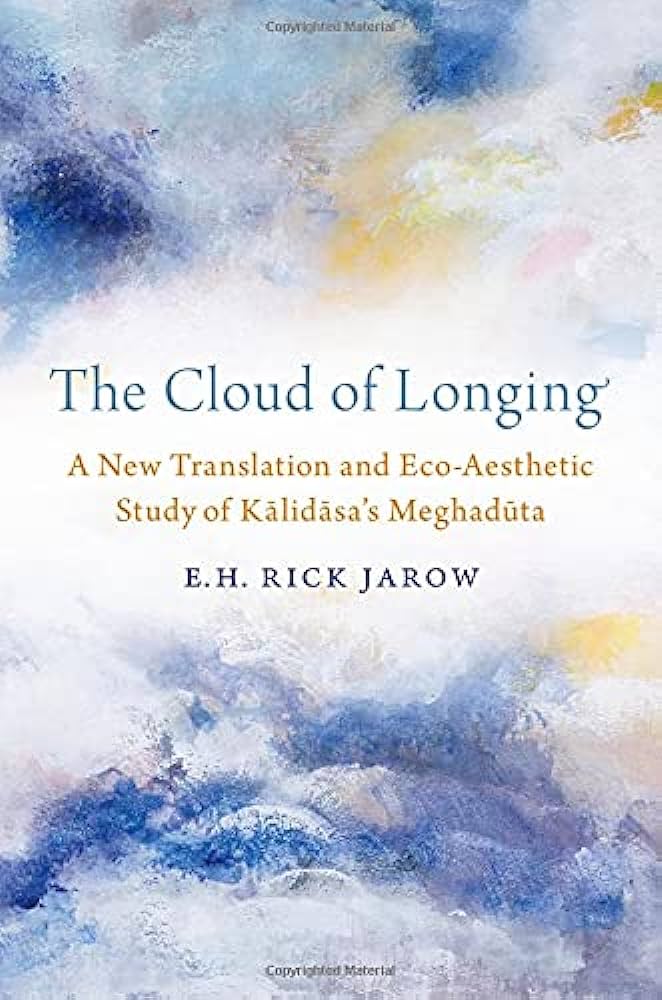Meghadūta One

I’m taking a class with Antonia Ruppel reading Meghadūtam in Sanskrit, using Kale’s text. In parallel, I’m reading The Cloud of Longing: A New Translation and Eco-Aesthetic Study of Kālidāsa’s Meghadūta by E. H. Rick Jarow. Jarow has some interesting things to say. Here are a few.
Implied here is the problem of encountering a tradition that is not primarily concerned with time as progressive teleology, as simulating the biography of a human ego. In both Indian Kāvya and Śāstra (scriptural) literatures, time is depicted as being extensively vast and circular, recurring through manifest and unmanifest cycles (vyakta/avyakta), issuing forth through eons to be absorbed in watery dissolution and reemerge again.
Jarow, E. H. Rick. The Cloud of Longing: A New Translation and Eco-Aesthetic Study of Kalidasa’s Meghaduta (pp. 51-52). Oxford University Press.
While listening to Barry McGovern read Finnegans Wake, the above passage came to mind and I thought about how congruent Joyce and Kālidāsa are.
What is known in Saussurean terms as “écriture” was thought of as a lower, discursive level of the whole of language, Vāc, and thus a crutch for the weakened minds of a “fallen” (kali-yuga) era. The power of the text traditionally emerged in its recitation (considered to be a meritorious act), which was controlled by its own ritualistic logic. Abhinavagupta thus describes the sahṛdaya, or “sensitive reader” (lit. with heart), as one who has had the mirror of his or her heart polished through the constant recitation and study of poetry. While self/speech relationships may have varied throughout the poetic tradition, the author was not thought of as the origin or controller of speech and the poetic voice was not one of individual personality.
Jarow, E. H. Rick. The Cloud of Longing: A New Translation and Eco-Aesthetic Study of Kalidasa’s Meghaduta (p. 52). Oxford University Press. Kindle Edition.
A bit further on…
The viśeṣaṇa, or unique quality of poetic composition, was not sought for uniquely in the author but in the text, or more specifically, in the suggestive power of language and its relationship to the reader-hearer. This is something to keep in the foreground.
Jarow, E. H. Rick. The Cloud of Longing: A New Translation and Eco-Aesthetic Study of Kalidasa’s Meghaduta (p. 52). Oxford University Press. Kindle Edition.
And to cap it, for now…
…the Indian tradition envisions the field of language as being embedded within the field of nature and hence able to effect transformations in nature. This sensibility becomes evident in reading Kālidāsa, since we know nothing at all about his person, neither from his works nor from historical documentation. The poet neither refers to himself nor to any particular time. Rather, the virtuosity of resonant language interacts with both mythic memory and geographical phenomena, lifting the reader-hearer out of separate categories and into rasa.
Jarow, E. H. Rick. The Cloud of Longing: A New Translation and Eco-Aesthetic Study of Kalidasa’s Meghaduta (p. 53). Oxford University Press. Kindle Edition.
